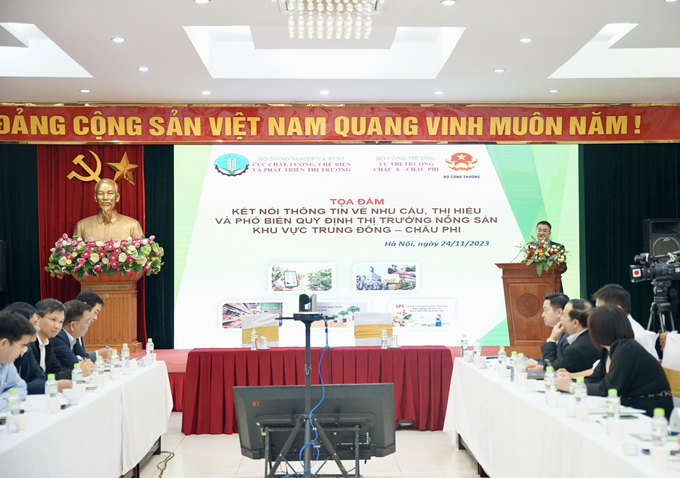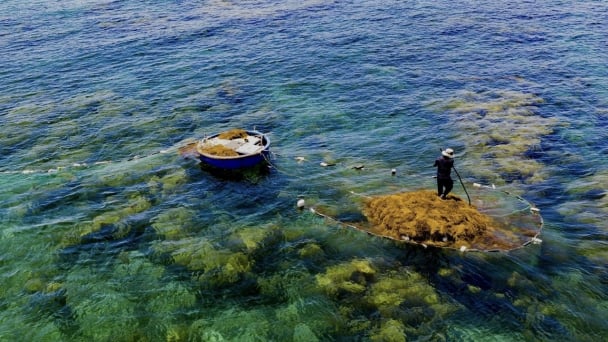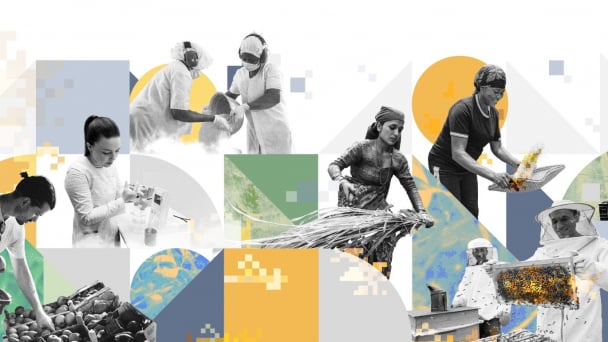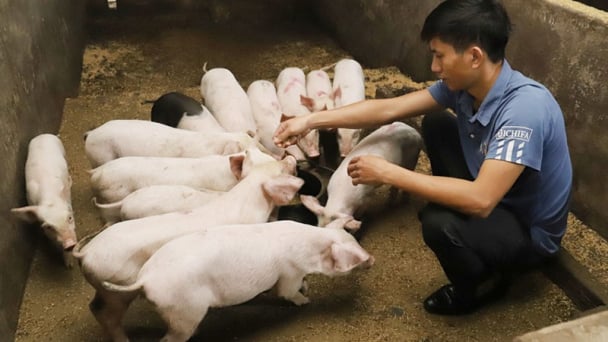June 21, 2025 | 03:39 GMT +7
June 21, 2025 | 03:39 GMT +7
Hotline: 0913.378.918
June 21, 2025 | 03:39 GMT +7
Hotline: 0913.378.918

The discussion on "Facilitating Exchange of Information on Market Demands and Dissemination of Agricultural Regulations in the Middle Eastern and African Markets" aims to provide information on exporting markets, regulations regarding SPS, packaging, etc of the related regions.
Mr. Ngo Hong Phong, Deputy Director of the Department of Quality, Processing, and Market Development, stated that Africa and the Middle East are two regions with a very small market share, accounting for only 2.1% and 1.5%, respectively, of Vietnam's agricultural and aquatic product consumption compared to traditional markets such as Asia, Europe, and the Americas.
In the first 10 months of the year, agricultural product exports to key market regions showed a decreasing trend compared to the same period (20.6% decrease in the Americas, 11.8% decrease in Europe), while Africa increased by 21.6%, and Asia increased by 5.7%. Specifically, the Middle East and Africa are vast markets with many countries and territories, representing potential and promising markets with significant demand for Vietnam's agricultural products, especially in food.
In recent years, Vietnam's agricultural product exports to these two market regions have been on the rise. The total export value of agricultural and aquatic products to these regions in 2022 reached over USD 1.6 billion (a 2.6% increase compared to the same period), and in the first 10 months of 2023, it reached nearly USD 1.6 billion (an 11.7% increase). In 2022, exports to the Middle East reached over USD 836 million (a 22.3% increase), and in the first 10 months of 2023, it reached nearly USD 700 million (a 2.6% increase); exports to Africa in 2022 reached over USD 859 million (a 11.3% decrease), but in the first 10 months of 2023, it reached nearly USD 900 million (a 20.1% increase).
Although the market share in these two markets is still limited, and the achieved value is small, the increasing export value of some products in recent years indicates the significant potential of these market regions, especially in the face of difficulties in some traditional markets such as the United States, the EU, and Japan.
According to Mr. Nguyen Phuc Nam, Deputy Head of the Asia-Africa Market Department (Ministry of Industry and Trade), the Middle East is a high-income market with a large demand for high-quality products, presenting an opportunity for Vietnamese agricultural and aquatic products to penetrate and increase market share in this region. For Africa, with a population of over 1.3 billion people and limited production capacity, there is always a large demand for the import of Vietnamese agricultural products.

Mr. Ngo Hong Phong, Deputy Director of the Department of Quality, Processing, and Market Development, stated that Africa and the Pacific are two regions with a very small market share.
In the export of goods to the Middle East and Africa, rice is both a traditional product and will continue to be a major export item in the coming years. In addition, there are other items such as aquatic products, coffee, tea, vegetables, and fruits.
Representatives from the Ministry of Industry and Trade also assess that the Middle East and Africa are potential markets for Vietnam's agricultural and aquatic products, helping to reduce dependence on traditional markets.
In addition to the opportunities, the export of agricultural and aquatic products from Vietnam to this region faces numerous challenges. Among these, significant barriers persist in terms of language, culture, legal systems, business customs, and transportation conditions between Vietnam and this region, constraining the development of economic and trade cooperation between Vietnam and the countries in the region.
With Vietnam's trade network in this region still not fully developed, many Vietnamese enterprises often have to export through international intermediary companies to mitigate risks. This practice increases the export value of Vietnam's agricultural and aquatic products, reduces competitiveness, and at times, hinders the recognition of the Vietnamese brand at the local level.
Another aspect is the limited connectivity and logistics service costs between Vietnam and the Middle East - Africa region. High transportation and insurance costs lead to elevated export prices, thereby diminishing the competitiveness of Vietnamese goods in the region.
It is noteworthy that issues of fraud and deception in trade transactions remain prevalent, coupled with a lack of information about partners, markets, policies, and import-export regulations in the region, creating high business risks.
Furthermore, due to the absence of established agent networks by Vietnamese commercial banks in this region, businesses encounter difficulties in the payment process for imports and exports. Simultaneously, they incur related costs associated with using international banks. These challenges linked to payment methods contribute to a financial burden on businesses.
During the talk, representatives from Vietnamese trade missions in the Middle East and Africa also provided information on market potential and demands, import market regulations, considerations in exchanges, commercial payments, and points of connection. They emphasized their role in supporting and connecting businesses engaged in import-export activities, as well as guiding production orientations for localities.
Translated by Dieu Linh
![Turning wind and rain into action: [10] Advancing accessible climate services for farmers](https://t.ex-cdn.com/nongnghiepmoitruong.vn/608w/files/linhnhp/2025/06/20/1911-z6704423696987_15fd32ffc26d590d204d520c9dac6786-nongnghiep-161854.jpg)
(VAN) Not only does it help farmers 'avoid droughts and rains,' the development of agricultural climate services also enhances their ability to proactively adapt to a rapidly changing climate.

(VAN) With international assistance, the harvesting of sargassum seaweed in Quang Ngai has become increasingly regulated, thereby safeguarding marine life and ensuring the stability of coastal communities' livelihoods.

(VAN) On June 19, the United Kingdom officially became a Development Partner of the Mekong River Commission.

(VAN) Biodiversity is being threatened by traditional remedies made from wildlife. Traditional medicine and humans must change to live in harmony with nature.

(VAN) Agrifood investment and finance solutions for people and the planet.

(VAN) Microplastic contamination has become pervasive in seafood, posing unprecedented challenges for food safety and marine ecosystems.

(VAN) Proactively using vaccines, combined with transport control and enhanced surveillance, is the only viable path toward biosecure and sustainable livestock production in Vietnam.